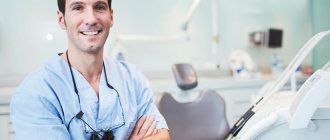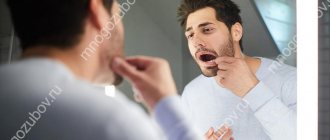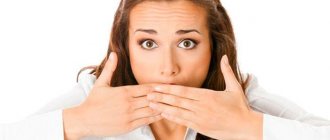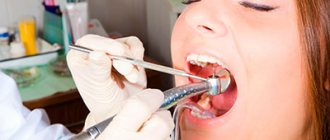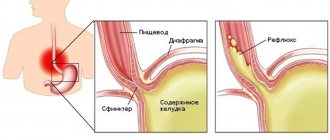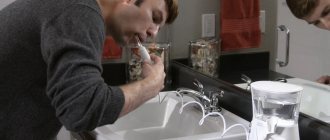Varieties
Unpleasant sensations can manifest as neck pain or shooting. Cervicago is an acute syndrome that prevents you from turning your head. Neck aching pain - cervicalgia. It happens:
- Superficial somatic. Occurs when the skin is damaged.
- Deep somatic. Appears when muscles and vertebrae are damaged.
- Visceral. Occurs as a sign of an infectious disease or pathology of internal organs.
If neck pain affects neighboring areas, either cervicobrachialgia (cervicobrachial syndrome) or cervicocranialgia (unpleasant sensations spread to the back of the head and then to the entire head) is diagnosed.
First actions
What to do if there is pain in the head and neck? Before you see your doctor, you can try the following:
- Open the windows and ventilate the rooms. The fact is that lack of oxygen also often causes headaches.
- Go for a massage. The main thing is to pay attention to the neck, back of the head and shoulders.
- Lie on your back. The surface must be hard. You need to “stretch” and relax.
- Any bad thought must be driven away. This will help you relax faster.
Causes
Most often, discomfort occurs due to muscle spasms or muscle strain. They happen for the following reasons:
- hypothermia;
- sudden turn of the head;
- staying in the same position for a long time;
- muscle overstrain during work.
The discomfort caused by these factors does not require complex treatment. As a rule, they go away on their own within 1-3 weeks.
If there is severe discomfort, numbness, the patient suffers from dizziness, impaired mobility, the causes of the illness may be much more serious. It is imperative to consult a specialist.
Acute pain syndrome is observed when:
- problems with the spinal column: bruises, soft tissue injuries;
- inflammatory and infectious diseases;
- radiculitis;
- herniated intervertebral discs;
- curvature of the spine in the cervical region;
- osteochondrosis, arthrosis;
- neurological diseases;
- fibromyalgia;
- oncology.
Depending on the disease and its degree, the pain syndrome may vary. Pathology can be suspected based on a number of accompanying signs.
Dental problems
Dental diseases
With deep caries and its complications - pulpitis, periodontitis - the pain radiates to the jaw in the area of the affected tooth.
Infectious and inflammatory processes of the soft tissues surrounding the tooth - periodontitis, abscess - cause swelling, which, by squeezing the nerve endings, provokes the appearance of painful sensations in the jaw.
With increased tooth sensitivity, eating hot, cold, spicy, sour or sweet foods and drinks, and brushing your teeth cause acute pain that spreads to the jaw.
When third premolars - wisdom teeth - emerge, complications often arise: pericoronitis, inflammation of the periosteum, one of the symptoms of which is severe pain in the jaw.
Dental treatment procedures associated with violation of tissue integrity - implantation, prosthetics, tooth extraction, installation of fillings, professional teeth cleaning and whitening - contribute to the appearance of pain in the jaw.
Bruxism
With bruxism, involuntary grinding of teeth at night significantly increases the load on the masticatory muscles, which leads to their prolonged spasm. In this case, the correct occlusion of the dentition is disrupted with the development of pain in the jaw when chewing.
Temporomandibular joint problems
If pain occurs in the jaw when opening the mouth, this is a symptom of temporomandibular joint pathology.
Pain in the projection of the jaw is often accompanied by pain in the ear, head, and face. The causes of joint dysfunction are injuries, malocclusions, incorrectly installed dentures, arthritis, arthrosis, and hypertonicity of the masticatory muscles.
Tumors of the lower jaw
Pain in the jaw area is characteristic of benign and malignant neoplasms. Benign tumors are characterized by slow growth and lack of invasion into adjacent tissues and organs.
Malignant neoplasia rapidly progresses, pain intensifies with irradiation into the eye, temporal region, ear, jaw.
Pain in the front of the neck
Unpleasant sensations under the chin or along the entire front of the neck may indicate a number of pathologies. The list is impressive:
- inflammation of the lymph nodes;
- angina pectoris;
- cysts and abscesses;
- inflammation of muscles, ligaments and nerves;
- pathology of the thyroid gland.
It is impossible to independently determine which disease this symptom has. The cause of pain can also be pinching of blood vessels or nerves by an intervertebral disc that has become deformed.
Our Innovative Medical Center has developed a set of programs aimed at eliminating diseases without surgery or pills. The team consists of experienced doctors: neurologists, osteopaths, chiropractors, kinesiotherapists, massage therapists.
Pain under the jaw: what causes unpleasant symptoms and how to eliminate them
If you have pain under your jaw, you should not ignore the unpleasant symptoms. They can talk about a number of diseases, some of which pose a serious danger to the body. Pain can also be caused by mechanical stress. When a blow occurs, you should ensure the integrity of the jaw. In any case, you need to visit a doctor. You may need to consult a dentist, surgeon, neurologist, otolaryngologist, or others. To understand which doctor is needed, it is worth analyzing the nature and location of the pain.
Back neck pain
Changes in the spine are the main cause of aching, sharp or nagging pain in the neck area. They occur due to low physical activity and constant work at the computer. Discomfort can be a symptom of the following diseases:
- osteochondrosis - changes in the structure of intervertebral discs;
- protrusion of intervertebral discs (their protrusion);
- intervertebral hernia;
- spondylosis - bone growths on the vertebrae;
- muscle spasms;
- vertebral fractures as a result of whiplash injuries or osteoporosis.
Pain in the back of the neck is a non-standard symptom of spinal tuberculosis, osteomyelitis, and Reiter's syndrome.
Pain syndrome in the lateral surfaces of the neck
Discomfort in these areas manifests itself as a burning, throbbing pain, sometimes accompanied by tingling. Unpleasant sensations spread to the shoulder or ear on the right or left. Sometimes they are accompanied by the appearance of secondary torticollis due to the constant tilt of the head to the affected side.
This symptom is inherent in the following pathologies:
- problems with blood vessels, atherosclerosis;
- muscle spasm due to a sharp turn of the head, hypothermia or physical exertion;
- malignant tumors localized in the larynx, thyroid gland, pharynx.
At the initial stage of rheumatoid arthritis, pain can spread to the cervical region, back of the head, and head. When turning the head or bending the neck, it intensifies.
Symptoms
If unpleasant sensations rarely bother you, they may be the result of an uncomfortable sleeping position or awkward head movement. No special treatment is required. To eliminate discomfort, do exercises, light rubbing, take warm baths, it is recommended to use an orthopedic mattress and pillows. But there are situations when you urgently need a consultation with a neurologist or chiropractor.
Warning signs include:
- stiffness of movements;
- the duration of painful sensations is more than 1-2 days;
- the appearance of concomitant pain in the shoulder, arm;
- frequent headaches, especially in the back of the head, which are accompanied by dizziness;
- numbness of fingers, hands.
If you have suffered a neck, head or spine injury and are constantly experiencing pain in these areas, we invite you to contact our Innovative Medical Center for help.
How to relieve neck pain with osteochondrosis
For acute pain, you need to take a non-steroidal anti-inflammatory drug or use a gel or cream with an anti-inflammatory effect. You need to rub the product wherever you feel pain and numbness. If the pain intensifies when you turn your head, you should limit your movements. Do not make sudden head movements. If you have shoulder pain, do not put any weight on your arm. It is possible to use painkillers with a warming effect.
All these recommendations will help relieve pain for 1-2 days. But to prevent repeated attacks, a complete cure for osteochondrosis is necessary. Our clinic specializes in the treatment of diseases of the spine; we employ real masters of their craft. We offer both the most modern and long-proven treatment methods: Hiwamat and UVT therapy, kinesitherapy, therapeutic massage, acupuncture, osteopathy, manual therapy, taping.
Lymphatic changes as one of the causes of pain under the jaw
When discomfort occurs, it is first necessary to assess the health of the submandibular lymph nodes. It is worth excluding or confirming (if pathology is present) lymphadenitis - inflammation that develops when an infection enters the lymph nodes. The disease in its acute form is accompanied by severe pain, body temperature rises, and weakness appears. Discomfort is especially acute when pressing on a sore spot. If timely treatment is not carried out, the disease enters the chronic stage. With different forms of lymphadenitis, an abscess or phlegmon can develop - a purulent formation.
Lymph nodes can become inflamed, for example, in acute and chronic tonsillitis. In this case, it can hurt from different sides under the jaw. But other symptoms come to the fore: acute pain in the throat (especially when swallowing), purulent plaque on the tonsils, fever - even up to 40˚C.
If the lymph node in the neck hurts, this may also indicate the appearance of a neoplasm. More often these are metastases that penetrate from other organs. The nature of the pain varies. The patient has an elevated body temperature for a long time, weakness appears, and he sharply loses weight.
Diagnostics
A neurologist is primarily involved in the treatment of neck pain. At the reception, the specialist listens to the patient’s complaints and conducts an examination. It determines the cause of the problem. Most often it becomes a deviation from the norm in the condition of the spine. These changes are the cause of the development of concomitant diseases of internal organs.
Each segment of the spinal cord is responsible for the functioning of a specific organ. When the vertebrae change position or the height of the intervertebral discs decreases, the transmission of nerve impulses from the spinal cord to the internal organs is disrupted.
If the problem is in the cervical region, the ENT organs, vocal cords, thyroid and parathyroid glands, neck muscles or forearms are affected. Those. Problems with the spine and diseases of internal organs are more often diagnosed. Therefore, for aching neck pain, examination by a chiropractor is recommended. If other diseases are detected, additional examination by specialized specialists: cardiologist, endocrinologist, otolaryngologist.
In our Innovative Medical Center, a patient complaining of discomfort in the cervical spine undergoes a comprehensive diagnosis. The list of procedures includes:
- blood test: general and biochemical;
- blood test for thyroid hormone levels;
- computed tomography of the cervical spine;
- magnetic resonance imaging of the neck area;
- Ultrasound examination of the vessels of the neck, salivary glands, thyroid gland with Doppler ultrasound.
Using MRI, a specialist examines in detail the condition of the intervertebral discs. The method allows you to diagnose diseases in the early stages. The doctor will assess the condition of the blood flow. If there is compression of the spinal cord and its roots, he will see them in the image.
Contact us
Call now
8 (495) 803-27-45
Make an appointment through our service
Make an appointment
Preventive measures
No one is immune from the problem described. But there are ways to minimize the risk of its occurrence. Among them:
- receiving qualified medical care for any ailments;
- annual laboratory tests;
- timely treatment of emerging dental diseases;
- sanitation of the oral cavity every six months;
- following medical prescriptions.
Take care of your health, and the risk of enlarged lymph nodes will be minimized.
Treatment of cervical pathology
After diagnosis, the doctor develops an individual treatment strategy for each patient. It takes into account the severity of changes in the affected area, concomitant diseases, age and level of physical development. A set of measures is being carried out aimed at eliminating the symptoms and causes of the pathology.
Physiotherapy
The Innovative Medical Center conducts sessions using modern Hivamat 200 Evident devices and equipment for shock wave therapy. With the help of these procedures, swelling and inflammation are relieved, and blood flow in the damaged area is improved. After a course of UVT therapy, the elasticity of ligaments and tendons is restored, and metabolism is accelerated.
Taping
This method of manual therapy relieves pain and restores damaged muscles. Special thermally coated bandages are used. They are carefully fixed on the damaged part of the body.
Manual therapy
For pathologies of the cervical spine, it is performed using several techniques. The session begins with a relaxing massage with increasing tempo of kneading. The effect is felt after 1 procedure. After the course, the vertebrae return to their anatomically correct position, and muscle spasms are eliminated. Blood circulation improves, soft tissues are restored.
Acupuncture
The procedure is indicated for various diseases of the musculoskeletal system. The effect on biologically active points of the body allows you to eliminate neck pain and weakness, and increase blood supply in this area.
Massotherapy
An auxiliary method of therapy is effective for osteochondrosis and other diseases of the spine. After the procedures, discomfort, swelling, cramps, and fatigue are eliminated. Improves blood flow, the patient’s well-being and emotional state. Either local or general massage is prescribed. Techniques are selected individually for each specific case.
Kinesitherapy
Exercise therapy and classes on special decompression simulators are prescribed to strengthen the muscle corset. During the procedures, the load is removed from the spine and the risk of cartilage abrasion is minimized. A large hall with additional equipment is equipped for classes - rollers, balls. Doctors and experienced instructors supervise the exercises.


